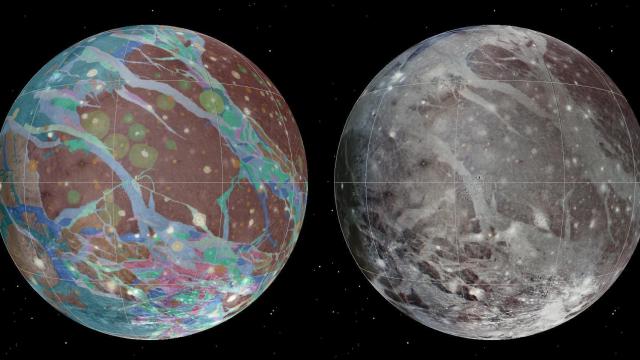Imagining Ganymede, Jupiter’s icy moon and the largest moon in our Solar System, can be quite the challenge. (I’m still at, “Whoa, that’s a big moon.”) Understanding it is a whole other story, and scientists are still working on that. Whether you’re seeking to learn more about the gigantic moon or unravel its scientific mysteries, you now “listen” to what Ganymede sounds like in space.
NASA’s Jet Propulsion Laboratory this month published the 50-second audio track, which you can listen to below, created with data captured by the Juno spacecraft during its close flyby of Ganymede on June 7. Data for the recording was gathered with Juno’s Waves instrument, which measures electric and magnetic waves produced in Jupiter’s magnetosphere. NASA then proceeded to shift the frequency of the collected emissions into the audio range to make the audio track.
Scott Bolton, a principal investigator on the Juno mission from the Southwest Research Institute in San Antonio, presented the recording at the fall meeting of the American Geophysical Union. Launched in 2011, the Juno mission aims to advance our understanding of how giant planets form and the role they played in the creation of the Solar System.
“This soundtrack is just wild enough to make you feel as if you were riding along as Juno sails past Ganymede for the first time in more than two decades,” Bolton said in a NASA news article. “If you listen closely, you can hear the abrupt change to higher frequencies around the midpoint of the recording, which represents entry into a different region in Ganymede’s magnetosphere.”

Juno’s flyby of Ganymede occurred on its 34th trip around Jupiter and was the closest a spacecraft has ever gotten to the Solar System’s largest moon, which is bigger than the planet Mercury, since the Galileo spacecraft’s approach in 2000.
The spacecraft managed to get within 645 miles (1,038 kilometers) of Ganymede’s surface while travelling at a velocity of 41,600 mph (67,000 kph).
